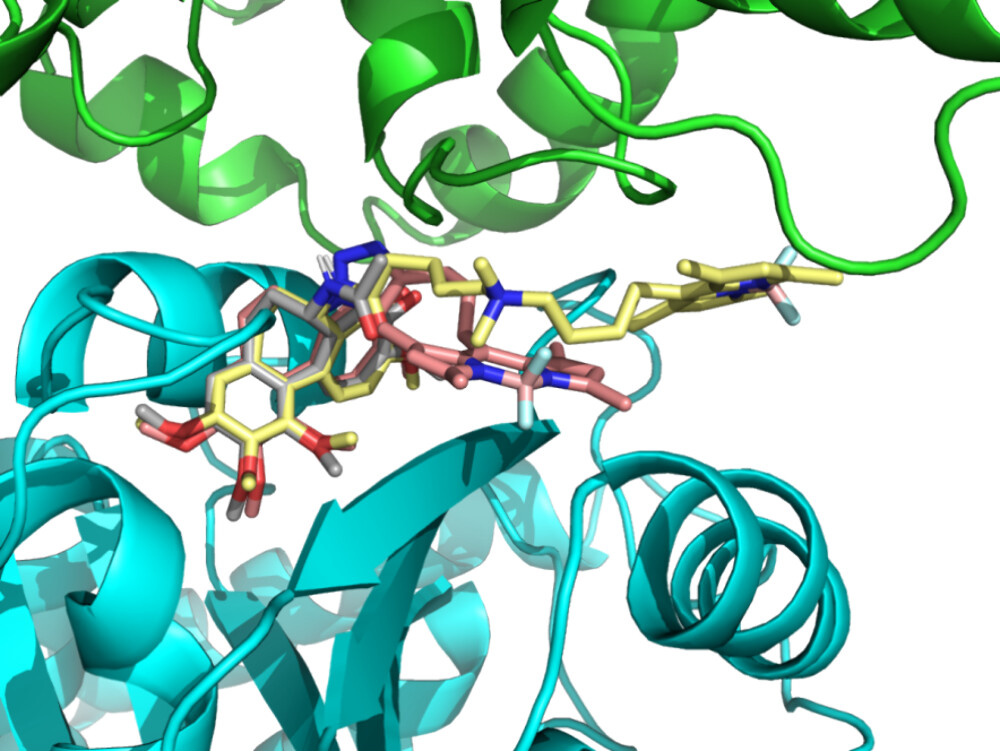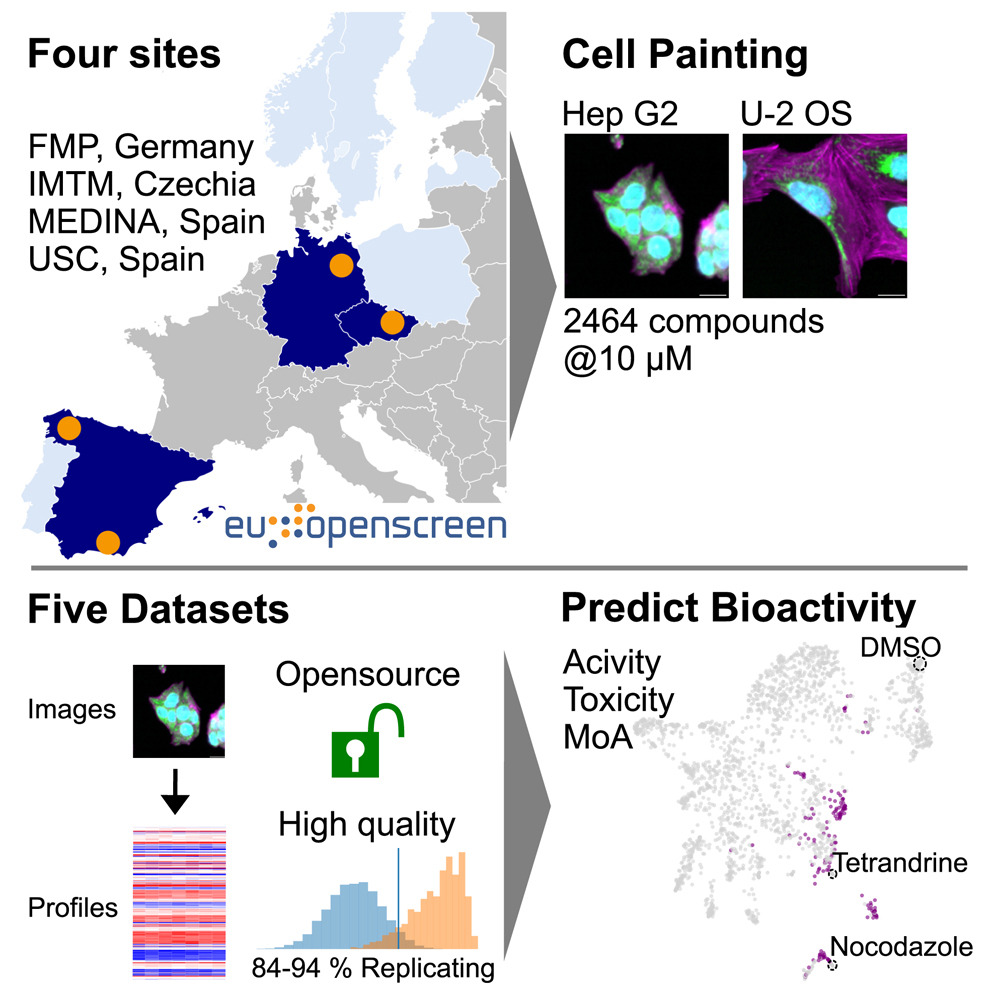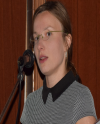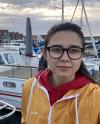Header image

Polishchuk Pavlo Ph.D., M.Sc.
Journals
Books & book chapters
Multi-instance Learning for Structure-Activity Modeling for Molecular Properties,
1.vyd,
Kazan,
Springer,
2021,
7,
62-71,
Dedication: RFMEFI57518X0177,
ISBN: 978-3-030-39574-2,
The Cross-Interpretation of QSAR Toxicological Models,
1.vyd.,
Springer, Cham,
2020,
262-273,
ISBN: 978-3-030-57820-6,
Structural, Physicochemical and Stereochemical Interpretation of QSAR Models Based on Simplex Representation of Molecular Structure,
1st,
Springer International Publishing,
2018,
4,
107-147,
ISBN: 978-3-319-56849-2,
Postdoctoral mentorship
Sriramulu Dinesh Kumar Ph.D.
Status:
Ongoing from 2024.
Doctoral mentorship
Ivanova (Nikonenko) Aleksandra
In silico design of compounds with desired properties
Status:
Ongoing from 2019.
Master mentorship
Švec Dávid
Data-driven optimization of compound properties and exploration of a chemical space
Status:
Graduated from 2016 to 2019.
Bachelor mentorship
Pitarch Marta
Morphological profiling of bioactive alkaloids in HepG2 cells using the cell painting assay
Status:
Graduated from 2024 to 2025.
Open positions
| Project: | Postdoctoral fellow/Researcher |
|---|---|
| Supervisors: | Polishchuk Pavlo Ph.D., M.Sc. |
| Available: | 1 |
| Intended for: | Postdoctoral training |
| Summary: |
The group of chemoinformatics and drug design at the Institute of Molecular and Translational Medicine, Faculty of Medicine and Dentistry, Palacky University in Olomouc, Czech Republic (https://imtm.cz/laboratories/chemoinformatics-and-drug-design) seeks for a postdoctoral fellow with experience in chemoinformatics and programming. The primary objective of the group is development of new computational approaches and software tools in drug design and their application in medicinal chemistry projects on hit/lead identification/optimization and target identification. The successful candidate will be mainly involved into the project on de novo fragment-based drug design and optimization. He/she will implement new and improve existing tools and approaches, validate them retrospectively and apply those tools in ongoing medicinal chemistry projects conducting at our institution in close collaboration with medicinal chemists and biologists. The candidate can be involved in other research projects depending on his/her experience and skills. The formal requirements: PhD in chemistry, chemoinformatics, computer science or related fields or 3 years of experience in relevant fields experience with molecular docking/pharmacophore modeling/machine learning knowledge of RDKit good Python programming skills and experience in software development data analysis skills basic medicinal chemistry knowledge is a plus good publication record excellent writing and spoken English The position will be opened for 2-3 years with a possibility of extension. Informal inquiries as well as applications, including curriculum vitae and bibliography, cover letter describing candidate research interests and past accomplishments should be sent via email to pavlo.polishchuk@upol.cz. |
| Project: | Multi-instance learning in chemoinformatics |
|---|---|
| Supervisors: | Polishchuk Pavlo Ph.D., M.Sc. |
| Available: | 1 |
| Intended for: | Doctoral training |
| Summary: | 1 place in full-time study |
| Project: | Modeling of biologically active compounds based on ligands and structure |
|---|---|
| Supervisors: | Polishchuk Pavlo Ph.D., M.Sc. |
| Available: | 1 |
| Intended for: | Doctoral training |
| Summary: | 1 place in full-time study |
| Project: | Explainable artificial intelligence in chemoinformatics |
|---|---|
| Supervisors: | Polishchuk Pavlo Ph.D., M.Sc. |
| Available: | 1 |
| Intended for: | Doctoral training |
| Summary: | 1 place in full-time study |
| Project: | Chemoinformatic approaches to drug design based on fragments |
|---|---|
| Supervisors: | Polishchuk Pavlo Ph.D., M.Sc. |
| Available: | 1 |
| Intended for: | Doctoral training |
| Summary: | 1 place in full-time study |
| Project: | Structural optimization of compounds to improve biological activity profiles |
|---|---|
| Supervisors: | Polishchuk Pavlo Ph.D., M.Sc. |
| Available: | 1 |
| Intended for: | Doctoral training |
| Summary: | 1 full-time position |
| Project: | Ligand- and structure-based modeling of biologically active compounds |
|---|---|
| Supervisors: | Polishchuk Pavlo Ph.D., M.Sc. |
| Available: | 1 |
| Intended for: | Doctoral training |
| Project: | Prediction of compound properties based on molecular representations |
|---|---|
| Supervisors: | Polishchuk Pavlo Ph.D., M.Sc. |
| Available: | 1 |
| Intended for: | Doctoral training |
| Summary: | 1 full-time position |
| Project: | Development of 3D pharmacophore signatures and their application in anticancer drug design |
|---|---|
| Supervisors: | Polishchuk Pavlo Ph.D., M.Sc. |
| Available: | 1 |
| Intended for: | Doctoral training |
| Project: | Analysis of morphological compound profiles |
|---|---|
| Supervisors: | Polishchuk Pavlo Ph.D., M.Sc. |
| Available: | 1 |
| Intended for: | Doctoral training |
| Summary: | 1 full-time position |
| Project: | Novel 3D pharmacophore representation for machine learning |
|---|---|
| Supervisors: | Polishchuk Pavlo Ph.D., M.Sc. |
| Available: | 1 |
| Intended for: | Master training |
| Project: | Applicability domains in machine learning modeling |
|---|---|
| Supervisors: | Polishchuk Pavlo Ph.D., M.Sc. |
| Available: | 1 |
| Intended for: | Master training |
| Project: | De novo design of compounds for protein targets |
|---|---|
| Supervisors: | Polishchuk Pavlo Ph.D., M.Sc. |
| Available: | 1 |
| Intended for: | Bachelor training |
| Summary: | - |
| Project: | Fragment-based de novo design using pharmacophore models |
|---|---|
| Supervisors: | Polishchuk Pavlo Ph.D., M.Sc. |
| Available: | 1 |
| Intended for: | Master training |
| Project: | Computationally guided optimization of compound properties |
|---|---|
| Supervisors: | Polishchuk Pavlo Ph.D., M.Sc. |
| Available: | 1 |
| Intended for: | Master training |








